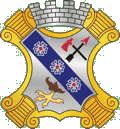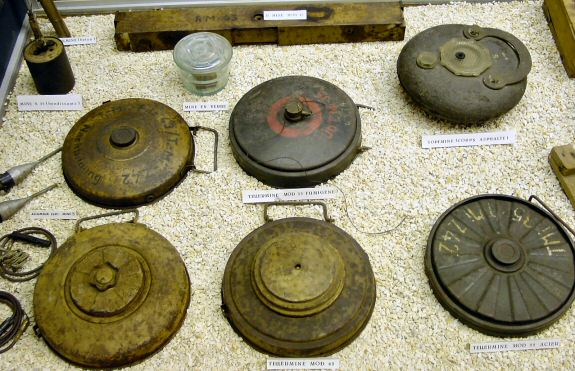(4TH INFANTRY DIVISION) IN THE HURTGEN FOREST,
GERMANY, 16-22 NOVEMBER 1944
(RHINELAND CAMPAIGN)
By Lieutenant Colonel James W. Haley

THE GENERAL SITUATION
The winter offensive was planned for early November 1944.
The exact date of D-Day was to be dependant upon the availability of ammunition and supplies and also upon suitable weather for air operations. A tremendous air effort was planned with the mission of blasting a path through the enemy defenses protecting Düren. 7

Düren in ruins.
It was known by the end of October that numerous enemy reinforcements had been brought into the line opposite the First United States Army. Therefore, in order for the main effort to be successful, it became evident that additional troops would have to be provided in the area opposite Düren. Accordingly, the 104th Infantry Division was assigned to the VII Corps and the 99th Infantry Division to the V Corps. Corps boundaries were not changed as a result of this regrouping so the zones of the divisions were considerably reduced. To further strengthen the main effort, which was to be made by VII Corps, the 4th Infantry Division was transferred from V Corps to VII Corps. Therefore, on 10 November the order of battle of the First United States Army was as follows:
| VII Corps | V Corps | VIII Corps |
|---|---|---|
| 1st inf. Div. 4th Inf. Div. 104th Inf. Div. 47th RCT 3rd Armd. Div. CCR, 5th Armd.Div. 4th Cav. Group |
8th Inf. Div. 99th Inf. Div. 102nd Cav. Gp. 5th Armd. Div. (-CCR) 9th Inf. Div.(-47 RCT) |
2nd Inf. Div. 28th Inf. Div. 9th Armd. Div. 83rd Inf. Div. 14th Cav. Gp. |
Dependent upon the weather, D-Day was to be between 11-16 November. If the weather had not cleared by 16 November sufficiently for the major air effort which was planned the attack was to begin regardless. 8
The 9th Infantry Division had broken the Siegfried Line early in September and by 17 September, when the advance was halted, had reached a line which extended from Schevenhütte, Germany, south to a point east of Lammersdorf and thence to Höfen. (See Map B) This part of the front then remained static and inactive from that date until the winter offensive began. The halt was called for the same reasons that the other divisions had been forced to halt. The divisions along the front were spread too thin and there were not sufficient supplies available to sustain the drive. Even though at this time the division was meeting only slight resistance and practically no prepared defensive positions, further advance was out of the question. 9
The Germans used the period of inactivity from 17 September to the first part of November to good advantage. They were not idle during this lull in the fighting. Troops were moved into the Hurtgen Forest sector and work on fortifications was begun. It was about this time that the independent Fortress Battalions appeared along the front. These units were placed under the command of headquarters of divisions which had been badly mauled in France. Their mission was to prepare and hold the line while the divisional units were withdrawn to the rear to reorganize and be refitted. 10
In addition to the Fortress Battalions, the enemy made extensive use of labor battalions and the civilian populace in preparing field fortifications to plug the gap the Allied Forces had punched in the West Wall. With very little interference from our forces, the enemy set about digging extensive trench systems in depth, building underground shelters and preparing automatic weapons positions which were provided with overhead cover. Barbed wire was put in all along the front and around strong points and extensive communication systems were installed. And last but by no means least, mine fields were laid -- mine fields of all sizes and all types, anti-tank mines and anti- personnel mines. The entire area was literally strewn with mines and other anti-personnel types. Every road, trail and fire break was blocked with Teller, Riegel and Box mines as well as abatis.

German Mines
It was by no means unusual to find the few roads in the area blocked every hundred yards or so by mines and trees felled across the road. To make these blocks difficult to remove, liberal use was made of anti-personnel mines and booby traps. Anti-personnel mine fields followed no general pattern and were emplaced along the front and in depth. Few of these mined areas were marked and it is doubtful that even the German troops knew their exact location and extent. 11
The Germans knew that the Hurtgen Forest played a vital role in their defenses protecting the Cologne plain and the Ruhr. They knew that so long as they held the forest and thereby the Roer River dams, the invasion of Germany in this region would be slow and costly, therefore, the forest was included in the defense of the Siegfried Line which ran along its western edge and extended into it in depth for several miles. 12

